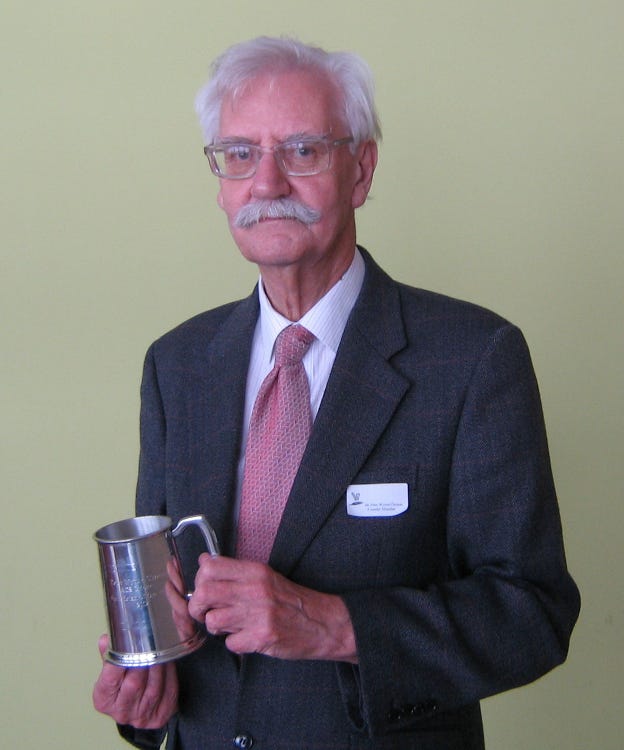Many cricket books have been poor ones. But nobody could ever lay any such accusation about the quality of Peter Wynne-Thomas’ work. In terms of sheer scholarship, I have always felt that if pressed to do so, I would award the palm to him for the most distinguished journal contributions I can recall. It would be invidious to pursue this, but to my mind, as historian, researcher and statistician, his all-round ability makes him the ACS’s nonpareil.
Endless examples could be cited, but for sustained brilliance I would alert the reader to two separate series: The Origins of Cricket, a six-part series and which is self-explanatory and on a subject occupied Wynne-Thomas all his life; and secondly to The Statistician’s Library, which ran longer and was introduced by the author as “A guide for the historian-cum-statistician through the labyrinth which is cricket’s bibliography.”
The first of these series began in Issue No. 52, the second in Issue No. 53. For a time, therefore, they appeared simultaneously in the same issues—a feat no other Journal author, I think, can claim. The “library” series was spread spasmodically over ten instalments, finally concluding with Issue No. 76. It has remained the last word on source material in annuals, magazines and yearbooks.
The most distinctive factor about Wynne-Thomas’ prolific output has always been the vast extent of his knowledge in every area of the game. “The Artillery Ground and its Paintings” in Issue No. 35 was a classic; so were his study of the 1785 season entitled “The Year of the Third Stump—Or Was It?” in Issue No. 51, and his analysis of Nottinghamshire’s 1933 run-rates and over-rates in Issue No. 62. This from a man who, apart from his writing and research, was also a linchpin of the ACS’s administration.
It could be claimed too, that no county has ever been better served by its historian and librarian than Nottinghamshire was for so long by Wynne-Thomas. Tony Woodhouse, his counterpart in Yorkshire, came close perhaps, and the rest of us smiled inwardly when these two titans had what amounted to a dignified and gentile crossing of swords in Issues No. 17 and 18. Wynne-Thomas initially put forward Sutton-in-Ashfield as having produced more famous cricketers than any other town in Britain—“or indeed the world.” Woodhouse responded by putting the case for Kirkheaton. Issue No. 19 and its immediate successors had no further reference to the subject; clearly no-one had the courage to attempt a decision between two such distinguished protagonists!
This article is adapted from the version which first appeared in the hundredth edition of The Cricket Statistician, published in Winter 1997. To join the Association of Cricket Statisticians and Historians, and subscribe to the journal, please visit our website:




